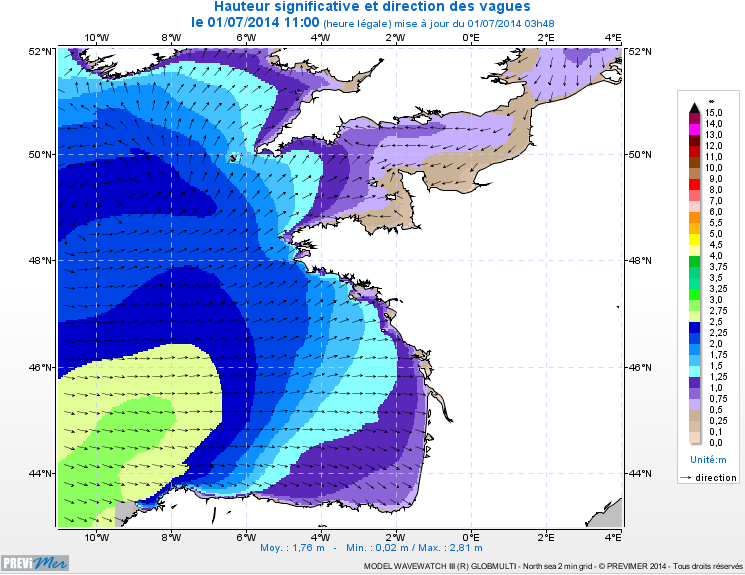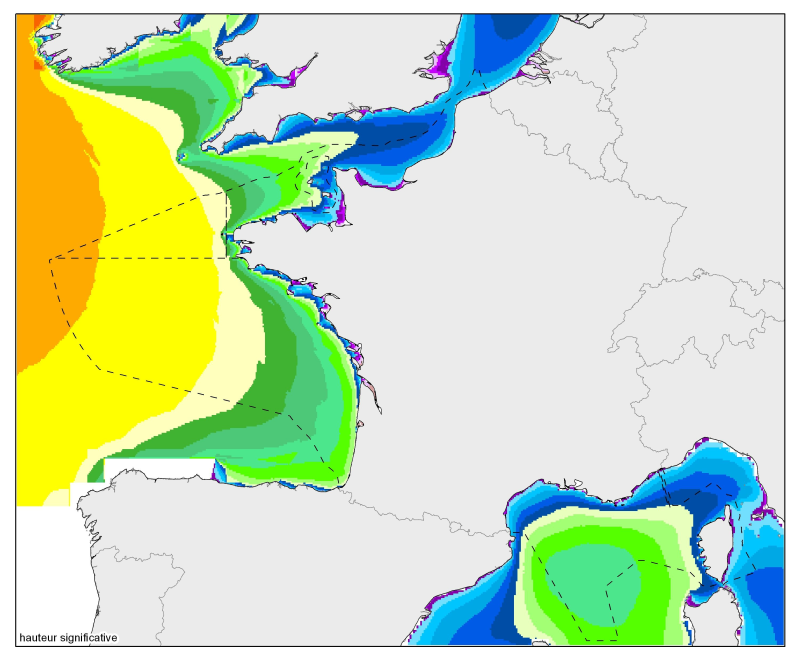Contact for the resource
CNRS
Type of resources
Topics
Provided by
Years
Formats
Representation types
Update frequencies
status
Scale
From
1
-
2
/
2
-

Modélisation des vagues les zones Manche Gascogne et Méditerranée. Période couverte historique 2011-2013 + prévisions à 4 jours
-

Moyennes, percentile 90 et percentile 99 des hauteurs significatives et des agitations significatives. De la Mer du Nord à la mer Méditerranée, à une résolution de 2 minutes.
 Catalogue PIGMA
Catalogue PIGMA